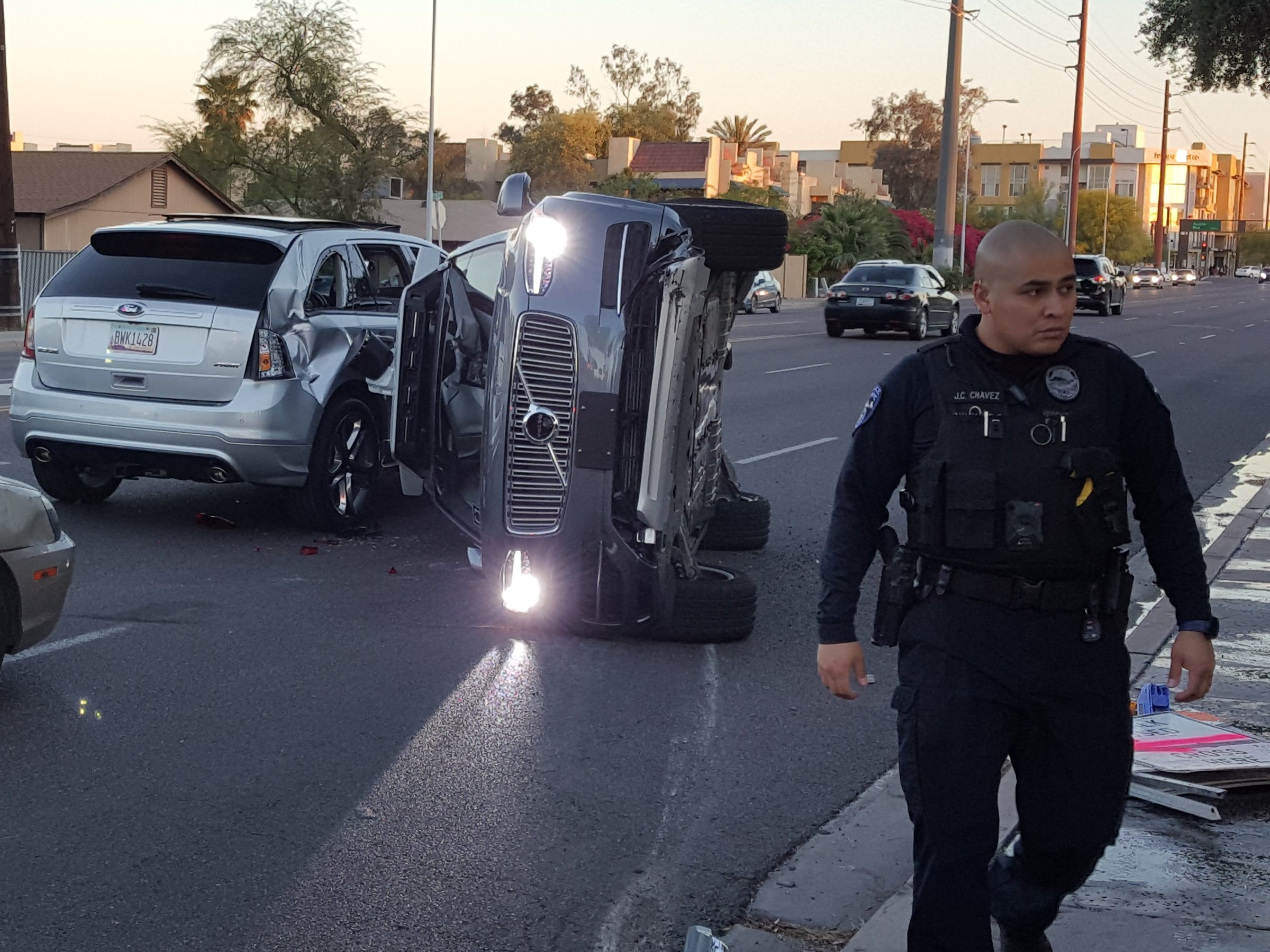Last Friday a self-driving Uber vehicle was involved in a car accident while driving through an intersection. Just today, a police report obtained by Business Insider revealed that the accident occurred while the Uber was driving through a yellow light.
Though the Uber vehicle, a Volvo SUV, was not deemed to be at fault for the accident, the incident does bring up several questions about whether humans may better handle complex traffic events where multiple factors must be weighed in a split second.
The wreck occurred in Tempe, Arizona when Alexandra Cole, driving a Honda CR-V, attempted to turn left across three lanes of traffic heading in the opposite direction. Cole crossed the first two lanes easily, as those lanes were backed up with traffic. However, when she reached the third lane, she ran into the Uber car that was driving through the yellow light at 38 miles per hour. The 38 mph speed was below the posted speed limit. After the Honda hit the Uber, the Uber drove into a nearby traffic pole and flipped on its side. There were no serious injuries reported.
The driver behind the wheel of the Uber, Patrick Murphy, stated that he saw Coles’ CR-V turning left, but “had no time to react” due to a blind spot caused by the other two stuck lanes of traffic.
Complicating matters is the fact that the Uber car did everything by the book: with a yellow light, it had the right of way. According to an Uber representative, Uber cars are programmed to proceed through yellow lights at their current speed as long as they can make it through the intersection, which was reported to be the case here. Uber operators are also apparently able to take control at yellow traffic lights if they don’t feel comfortable with the situation, though that did not occur in this scenario.
Witness statements also complicate the matter. One eyewitness stated “we saw the [Honda], it was coming fine on her end but the other person [Uber] just wanted to beat the light and kept going….All I want to say is it was good on the end of the [Honda] driving toward us, it was the other driver’s fault [Uber] for trying to beat the light and hitting the gas so hard.”
Of course, one can easily see several issues with the incident: would a regular human driver, even if they didn’t see the turning CR-V ahead, have approached that yellow-light at that speed? It isn’t a huge stretch to imagine a car in the backed-up lane jumping into the freed-up lane in order to move ahead, or in order to beat the changing traffic light.
Also, would a human driver approach a yellow-light intersection at that same speed if there was a huge blind spot ahead, as the Uber driver said existed?
All of these factors highlight the many issues that exist with the recent rise self-driving vehicles. As companies like Uber and Tesla start to test and roll out their self-driving fleets, the reliability of their automated cars versus the reliability of human drivers in complicated situations will be intensely monitored.

Source: http://www.businessinsider.com/uber-self-driving-car-accident-arizona-police-report-2017-3
